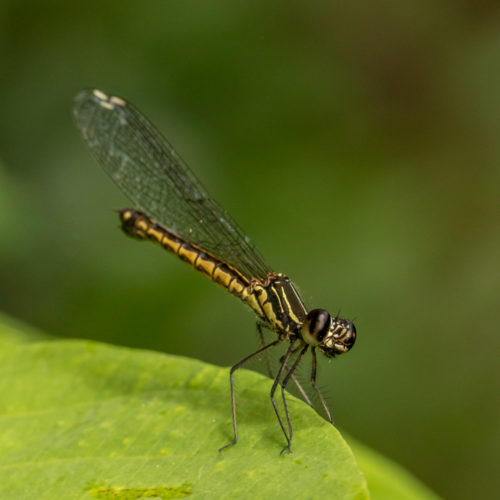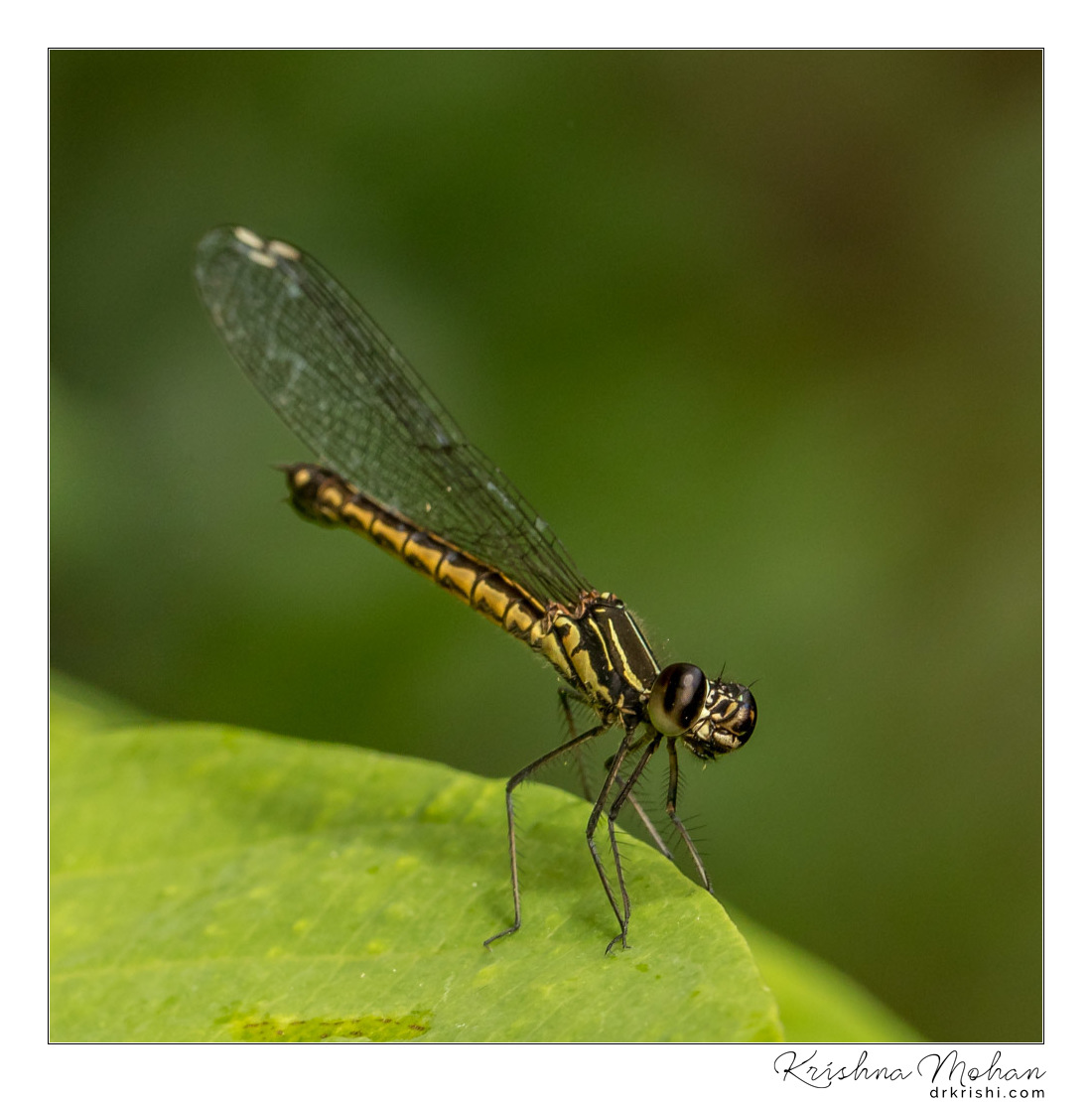
One of the questions I get very frequently from beginner macro photography enthusiast is, why should I get flash for photography and is it possible to shoot macro with natural light. The best light for outdoor macro photography is a bright, overcast sky where the thin cloud diffuses sunlight and acts like a giant softbox. This provides an even, gentle light that brings out texture and detail and renders colour beautifully. I found this Libellago indica, southern heliodor damselfly in my garden on a partially cloudy day. You can see all the images in this series were captured using that light except the third one where the sky opened and resulted in a relatively harsh light as denoted by harsh shadow. I have retained that photo to show you how the harsh light makes difference in the capture. I captured these images using Canon EOS-5D Mark IV with Canon EF 100mm f/2.8L Macro IS USM
In many ways, natural light is inherently better than a flash — it’s free, for starters, and you don’t have to worry about changing its position. Plus, when the sun is near the horizon or behind a cloud, the quality of natural light is better for macro photography than all but the most elaborate artificial lighting solutions. With natural lighting, an important positive is that the light source stays effectively still. To change the quality of light, you must move around the object you wish to photograph. This can lead to more creative options that may be visible at first — even minor differences in your position can make an important difference in the quality of foreground or background light.

When you use natural light for macro photography, you will always be pushing the boundaries of your camera system. For the daylight captures like these you should use 1/100th or faster Shutter speed. Any slower speed will blur the image. Aperture can be anything, but if you try 1:1 magnification without apertures like f/10 you won’t get deep depth of field. You can solve this by backing away from such magnification and using a wider aperture like f/4 or f/5.6. ISO needs to be at ISO 400 since ISO 100 will not be sufficient. If the light is not bright enough you will notice the above settings will produce underexposed images. You can try going one more increment on the ISO and after that, you will be forced to use of artificial light like flash.
Macro photography presents a unique set of challenges for the photographer. When overcome though, it’s possible to create intriguing images of things that may be overlooked or unseen with the naked eye. The difficulty lies in the close subject-to-sensor distance, which magnifies the subject and results in a very shallow depth of field.

To get as much of the subject in focus as possible, it’s necessary to stop down the aperture of the lens. For fast shutter speeds to avoid blur caused by subject or camera movement, you need a lot of light. Opening up the aperture will let more light in and diffuse the background, making the subject stand out. The depth of field will be extremely shallow, but you can achieve unusual, creative images by the precise use of selective focus. You can shoot in daylight using the ambient light available. The quality and position of the light are important.
Ensure you diffuse bright sunlight. Harsh light creates too much contrast, with over-bright highlights and shadows lacking detail, especially when shooting subjects with shiny surfaces. Diffusers help to eliminate reflections, softening the light to give beautiful colours and tones. I use a white diffuser (you can also use a white umbrella) attached to a small tripod to filter sunlight and make the light diffuse.

Libellago indica, southern heliodor is a species of damselfly in the family Chlorocyphidae. Fraser described this damselfly in 1928 as a subspecies of Libellago lineata. Recently it is listed as a species.
It is a small damselfly with a large head and brown capped yellowish eyes. Its thorax is black with yellow marks. Wings are transparent with apical black spots on the fore-wings. The abdomen is black with large yellow spots on lateral sides on segments 2 to 7. Segments 2 to 5 have broad mid-dorsal black stripes which is absent in Libellago lineata. These abdominal markings will help to easily distinguish it from Libellago lineata. Female is dull brown and with transparent wings. Sub-adult males have also transparent wings.

This species belongs to the genus Libeallgo which is represented by Libellago indica, and Libellago lineata on mainland India. While the Andaman and Nicobar Islands have at least four species.
This damselfly is found only in South India. It breeds in hill streams and rivers. It is common on the banks of rivers and streams flowing through the forests. Frequently found sitting in emergent water plants and overhanging bushes. It breeds in hill streams and rivers.



Wonderful captures and informations regarding macro photogrphy!
Beautiful site with good information….